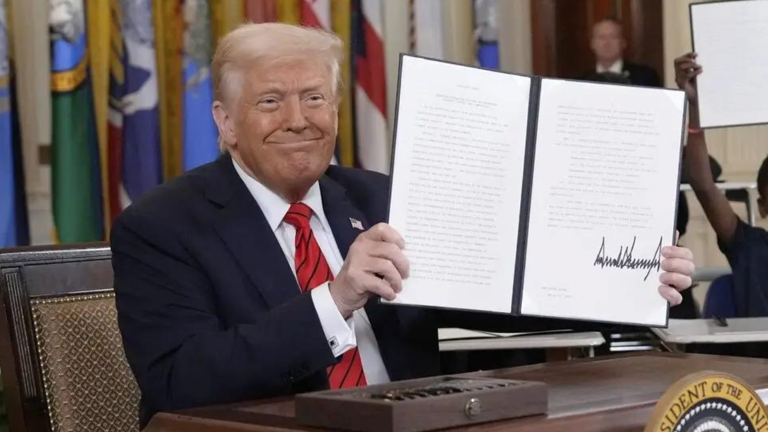
- Trump’s executive order significantly reduces the Department of Education’s role, cutting staff and shifting control to states.
- Funding for low-income students and services for students with disabilities could face major disruptions.
- The future of the $1.8 trillion student loan program remains uncertain as plans to transfer management are unclear.
How Will This Impact Students and Schools?
Former President Donald Trump has taken a major step toward fulfilling his long-standing campaign promise: dismantling the Department of Education. While he cannot eliminate it without Congressional approval, his executive order slashes staff, reduces funding, and shifts responsibilities to other agencies. This move has sparked intense debate over how it will affect students, particularly those from low-income backgrounds and those with disabilities.
One of the biggest concerns is funding. The Department of Education provides over $18 billion annually to schools in high-poverty areas through programs like Title I, which supports 26 million low-income students. With the department’s downsizing, advocates worry these critical funds may be cut or mismanaged, leaving vulnerable students without necessary resources.
Additionally, students with disabilities could face challenges. The Individuals with Disabilities Education Act (IDEA) currently provides $15 billion in support, helping 7.4 million students access specialized programs. Under Trump’s plan, these services would move to the Department of Health and Human Services, an agency with less experience in education. Experts fear this transition could lead to disruptions, delays, and reduced access to essential services.
What About Student Loans and Curriculum?
Another major uncertainty is the management of federal student loans, which total $1.8 trillion. The executive order hints at transferring loan oversight to the Treasury Department or Small Business Administration, but no concrete plan has been outlined. With 40% of loans already past due, any missteps in restructuring could create chaos for millions of borrowers.
However, despite the sweeping changes, local and state governments will still control school curricula. This means that subjects like math, science, and history will not be directly affected by Trump’s order.
What’s Next?
Trump’s push to scale back the Department of Education is one of the most significant shifts in U.S. education policy in recent history. While supporters argue that decentralizing education will give states more control, critics warn that it could weaken protections for disadvantaged students.
With major funding, special education services, and student loans hanging in the balance, the coming months will be crucial in determining how these changes play out. Parents, educators, and students alike will be watching closely to see what happens next.




































Leave a Reply